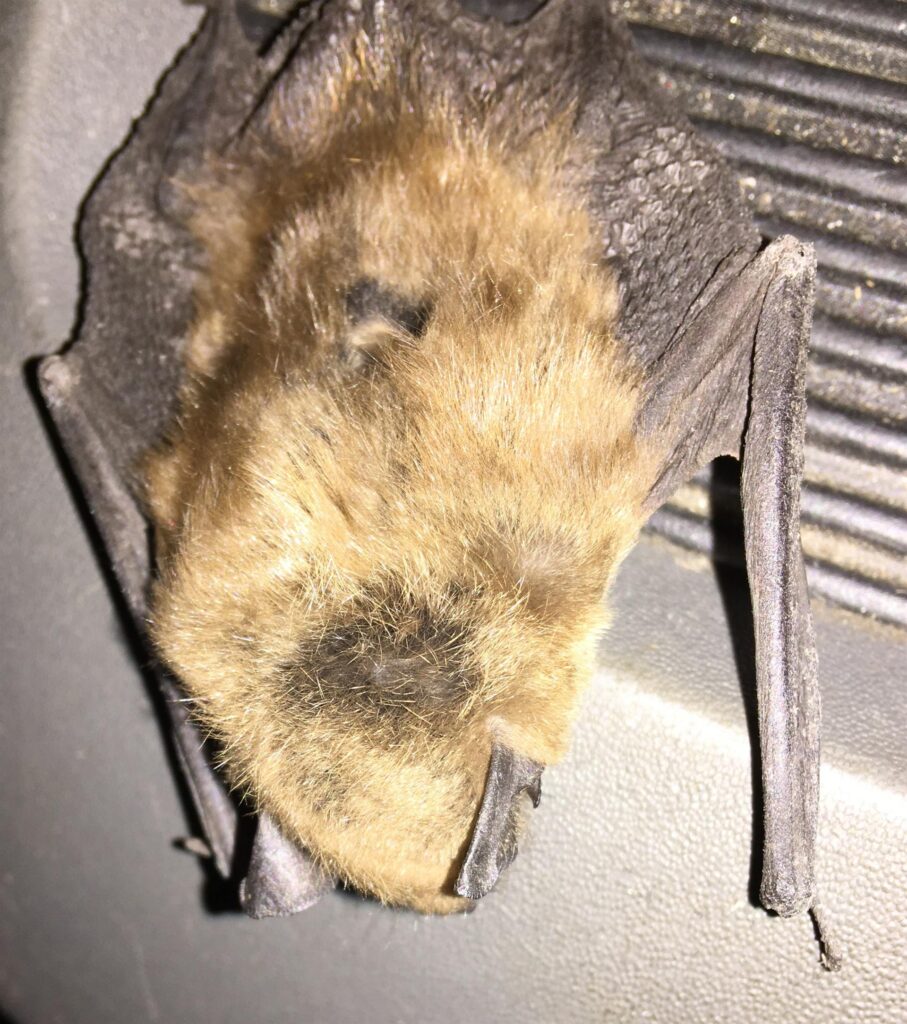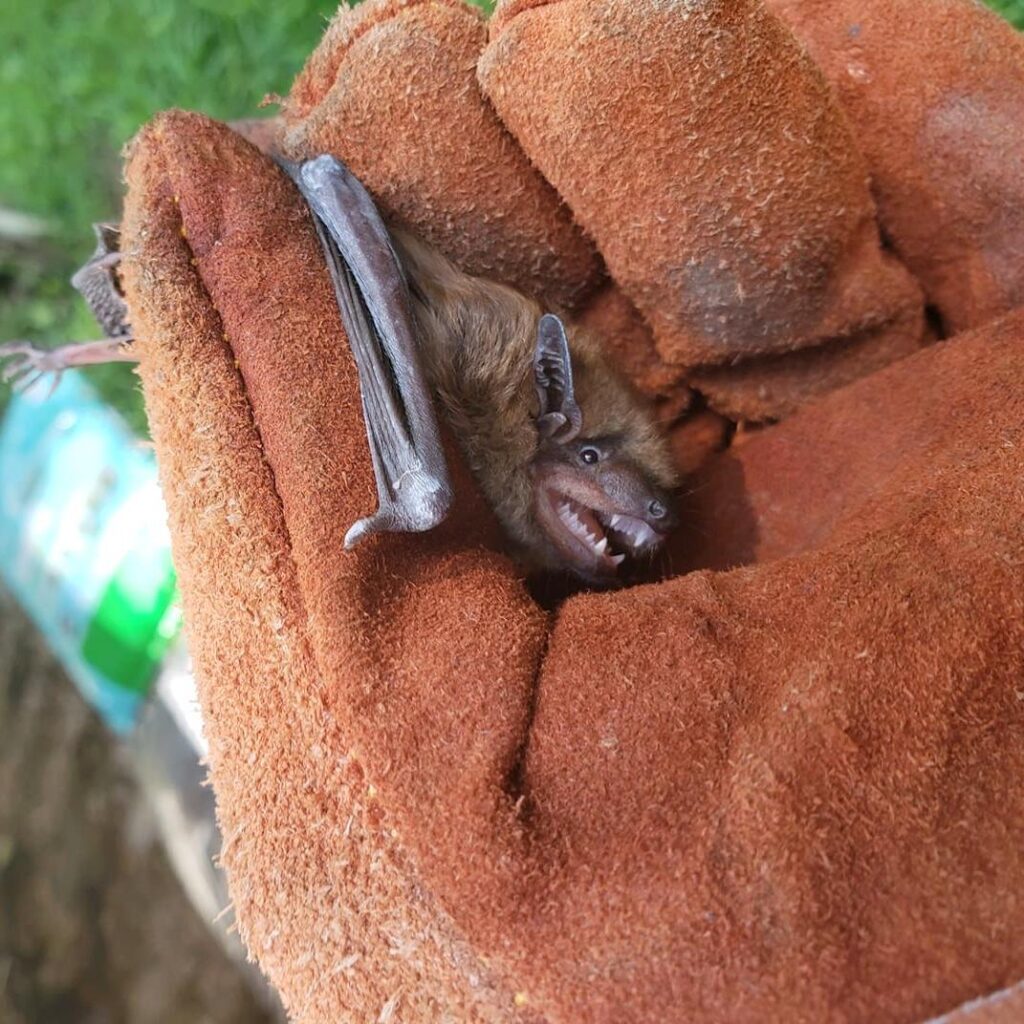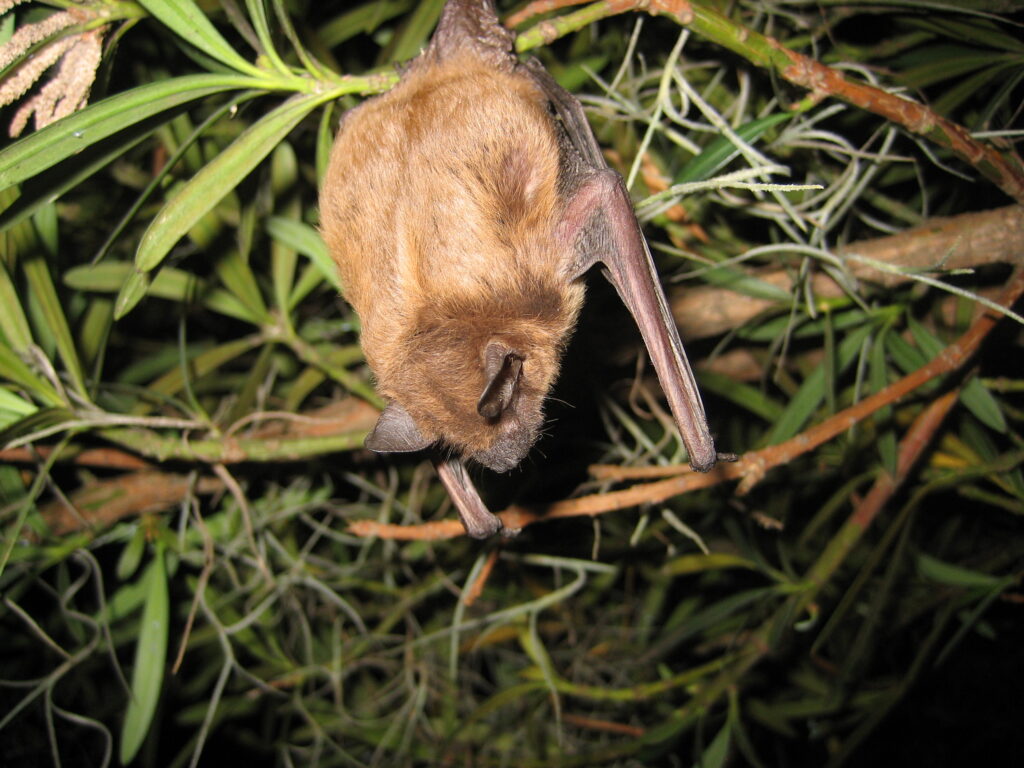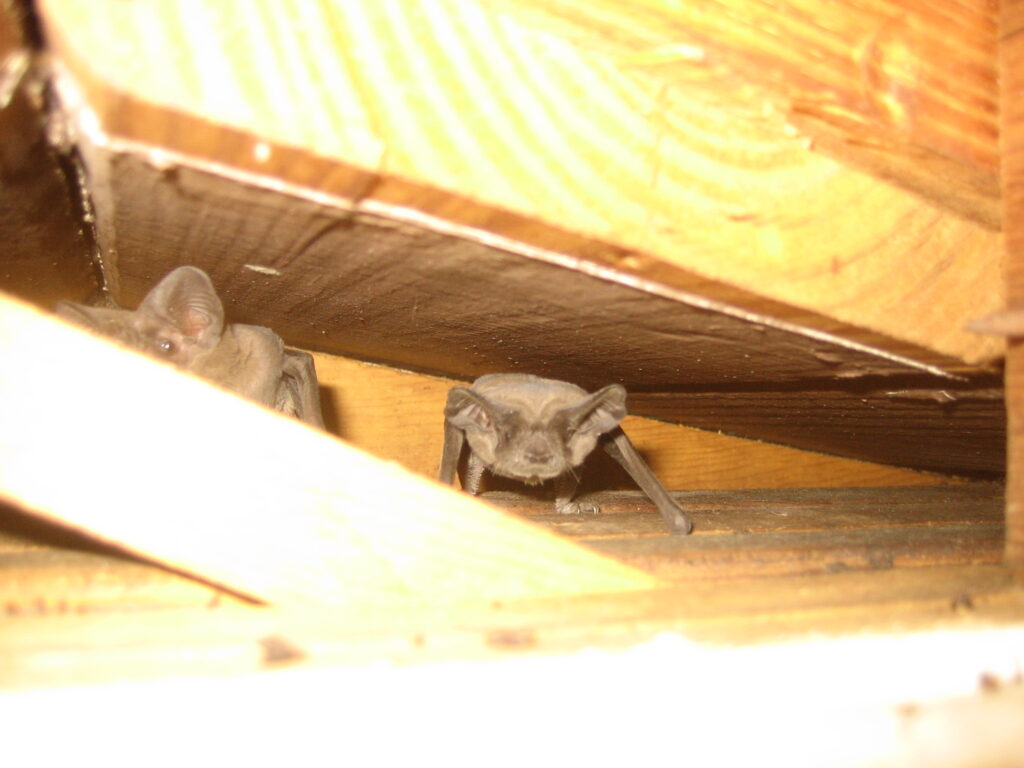Bat Removal
Bat Removal
While bats are often associated with castles, Dracula, and Halloween, bats are actually very common in most areas in the United States. It is widely known that bats carry rabies, but people are shocked to find out that they are far more dangerous than that. If you have bats, it is smart to get rid of them as soon as possible. Continue reading to learn more about bats and how you can get rid of them.

What problems do bats cause?
The most serious problem bats cause is by far the health risk. Humans are well-advised to stay away from bats as much as possible. Multiple studies have found that bats can carry well over 130 different diseases. This is very serious, as virtually every disease has the potential to harm humans severely. Diseases such as the coronavirus family, Marburg, Ebola, and rabies are just a few that these winged creatures have been known to carry. In addition to being bitten by bats, these diseases can also be spread through bat feces, urine, and saliva.
While the health risks are very serious, so is the potential for property damage. Bats are creatures that love to live in homes. They often make their way into attics and that is where they do their worst property damage. Bats roost in attics, leaving their droppings everywhere. This ruins insulation, as the insulative value of it is diminished severely. This leads to decreased energy efficiency, which can cost you hundreds of dollars in the long run. The risk for property damage and the health risks cannot be overstated, and that is why it is utterly important to remove bats as soon as possible.
Why Are Bats Attracted to My Property?
When bats come onto your property, there are generally a couple of reasons for it. One of the biggest reasons is an abundance of food sources. Bats love to live in areas that have insect populations that are very large, as bats kill many, many insects in a single night. In addition to food sources, bats also prefer to live in areas that have good shelter for them to live and to raise their young. Trees, entry points into an attic, overhangs or many other structures make excellent roosts for bats. Finally bats also come onto properties if they are trying to prepare for winter and need to find a good place to roost.

How can I prevent bats?
Much like rats and mice, bats can get through the smallest of entry points, making them a very difficult animal to prevent from entering your home. One of the best ways to keep them out is to inspect your home from top to bottom. Be sure to look along the roofline, around the attic, and anywhere on the top half of your home. If you find any holes or cracks that could allow access, be sure to seal them using an all-weather sealant or some aluminum sheeting. In addition, be sure to check your shingles and make sure that there are none that allow entry for small pest animals.
How do I remove bats?
Even though they can present quite the health risk and property damage risk to your home and buildings, bats are very important to ecosystems. They get rid of many of the pest insects that would otherwise have a population explosion, such as mosquitoes, moths, and beetles. It is also important to realize that many bat species are endangered or protected from trapping and removing by local, state, or federal laws. Bats are very sensitive creatures that can die from the stress of being removed from a home that they have gotten used to. Humane capture and relocation is the best way to get rid of bats, and this is usually done best by professional wildlife removal companies. While removing bats on your own is not something recommended for homeowners, there is a way to do it that will not bring you into direct contact with the bat, making the situation better for the bat and the human. This method is called a one-way door. The door allows bats to leave wherever they are living but does not allow them to come back in. If you insist on doing it on your own, the one-way door is definitely your best bet at avoiding bat diseases. While it might sound easy enough to try on your own, removing bats is best left to professional wildlife removal companies, as you could have serious legal penalties or personal harm if you try to remove bats on your own.
Why hire C&C Wildlife Control?
C&C Wildlife Control should be your first choice for professional wildlife removal services. We have years of experience in dealing with bats and many other pest critters. Our service area includes Hartford County and Tolland County in Connecticut. While there are many reasons to hire a professional wildlife removal service to rid your home of bats, the most important is the risk to you and your family that trying it on your own can cause. In addition, legal fees can be very steep depending on the actions you take. At C&C Wildlife Control, we love taking care of our client’s problems in a stress-free, low-risk way. Our ability to remove bats is bolstered by many of the other services we offer. Once we have removed all of the bats present in your home or other building, we take care to offer you a variety of other services. One of the most popular is animal exclusion, as this is how you prevent any future infestations. In addition, we offer sanitation services, attic restoration services, and animal damage repair services. Give C&C Wildlife Control a call if you have a bat problem of any kind!

How to Get A Bat Out of The Attic?
So you’ve got bats in the attic… well, unpleasant though it may be, we suggest you don’t worry very much, as you are not alone. In fact, bats are quite a common house intruder across the United States. At C&C Wildlife Control, we’ve seen more than our fair share of the little flying rodents inside human homes. So in this post, we’ll give you the scoop on what you can do if there’s a bat bothering you, but also what steps you’ll need to take to prevent future invasions.
Ready? Let’s talk about bats.
Trapping bats may land you in legal trouble.
You might not be aware of this, but bats are actually a protected species in many areas of the United States, which can make bat removal from human properties tricky. Why are they protected? Because a bat’s diet consists mainly of insects, many of which we’ve deemed parasitic in nature, and so by eating them up, bats are actually doing a favor to the environment. And if we killed all the bats, then there wouldn’t be anyone left to get rid of these harmful insects for us.
So bats are protected across the country, particularly during nesting season, when momma bats will take shelter in your home to raise their young. Killing or attempting to remove the bats (and in any way harming the baby bats) can land you in rather hot waters, legally speaking.
This is why you should leave it to a professional.
If you’re dealing with bats in your attic, the best option would be to call a professional wildlife removal company. One of the benefits here is that your local wildlife removal expert will already be well-versed in the legal specifics surrounding bats in your area, which will save you quite a bit of research.
They’ll be able to tell you what to do, inspect the area, and fix up as much of the damage as possible. In some cases, they will also be able to remove the bats from your property safely, and without incurring the wrath of the law.
Wait it out.
If you’re dealing with a mother colony whose main purpose is raising young baby bats, waiting them out may be an option. When the baby bats are grown and can take care of themselves, they may leave on their own.
Install an exclusion device – but only if there aren’t any baby bats!
Not all bat colonies will host babies, and in those cases, you may install an exclusion device on the entry point. This is basically a one-way door that will allow the bats to leave (which they will do naturally, at night, to look for food), but not comes back inside. Gradually, all the bats in the colony will leave, and you’ll be home alone once more.
Careful, though, you can’t do this exclusion trick if there are any baby bats around. Since baby bats aren’t really old enough to fly out on their own, trapping the mother out will lead them to die by starvation, which is both inhumane, and illegal. Not only that, but dead bats on your property may attract other undesirable wild animals. So it’s best you just don’t do it.
Clean up the mess.
Once the bats are safely off your property, we suggest gearing up (this means wearing protective gear over your face and hands), and cleaning up the mess and damage. Bat droppings (guano) can be corrosive, and so, can damage your property, not to mention expose you to disease! Make sure you seal up the entry point, to prevent future bat invasions.

How to Keep Bats Out of The Wall
One of the biggest detriments that Bats cause in the home is their contributions to Structural damage and the disease they spread directly through pests or other parasites. Also, the appearance of bats is discomforting around the house due to the existing myths/stories about them.
Although Bats play a considerable role in insect control and pollination, they are still undesirable creatures by a mile to have to play around your home. Imagine coming home at night to see a mouse-looking creature staring eerily at you.
Bats in walls
If bats invade the home, they will attempt to look for dark spaces or areas they can crawl into to appear by night. Cracks or holes in the wall provide great comfort and cover for Bats living on your property.
Bats also have an uncommon preference to hang upside down on any place they nest in the home. And this can cause lots of structural damage to anywhere they hang.
It is better to keep Bats from ever entering your property rather than scrambling for a means to evict them once it becomes an invasion. The various means of preventing bats from your walls include;
- Cover up all holes and Cracks
Cracks and other openings in your walls are the biggest way Bats can get into your property. If you notice bat nests in your wall, there is a betraying hole/crack. Bats prefer dark places where they can “see”; it is easy to understand why they will enter the holes.
- Using bats repellents
There are lots of synthetic and naturally prepared substances that are highly repulsive to bats. These substances can be sprinkled/sprayed around suspected Bat-infested areas.
Natural repellents are usually successful, as Bats have a very keen sense of smell. For example, most bat species are repulsed by the scent of;
- Spearmint,
- Thyme,
- Eucalyptus,
- Cloves,
- Cedarwood,
Sprinkling any of these substances around a bat location will make it very uncomfortable for them and compel them to relocate.
You can also visit the wildlife store near you to inquire about the best bat repellent available.
- Installing a Bat net, especially around walls
Since bats are widely blind during the day, a net can be a very effective way to catch many of them at once. If you notice high bat activities in one area of the house, installing the net close to that area is good practice before it spreads into the interior.
- Remove all food interests in the home/walls.
Bats will usually nest close to where they find food. Depending on the bats you are dealing with, work on ridding the bats of their sumptuous meal.
You may consider cutting down all tree branches adjourning the wall for fruit bats. You may also consider a repulsive chemical spray around the trees that will drive bats away.
For insect bats, you should rid the area of favorite insect meals like Beetle, Moths, Mosquitoes, and other possible insects.
- Brighten up the areas around walls
Bats are often referred to as “vampires” due to their aversion to bright lights. If you notice a particular wall or dark corner of the house where bats are favorite to nest, it is best to install bright lights.
It alarms them, but it also irritates and eventually scares them off.
- Sound harassment
Bats have great trust in their sense of hearing, often in a frequency higher than those of man. This technique allows them to find food, estimate distances, and escape prey. However, installing loud sounds will not only affect their activity but scare them off the property.
Other physical means include;
- Adjusting the temperature beyond their threshold (80-90),
- Hanging aluminum foils to reflect light
- Dropping mothballs in their nests
- Installing mirrors to reflect lights
- Spraying essential oils around such regions.

